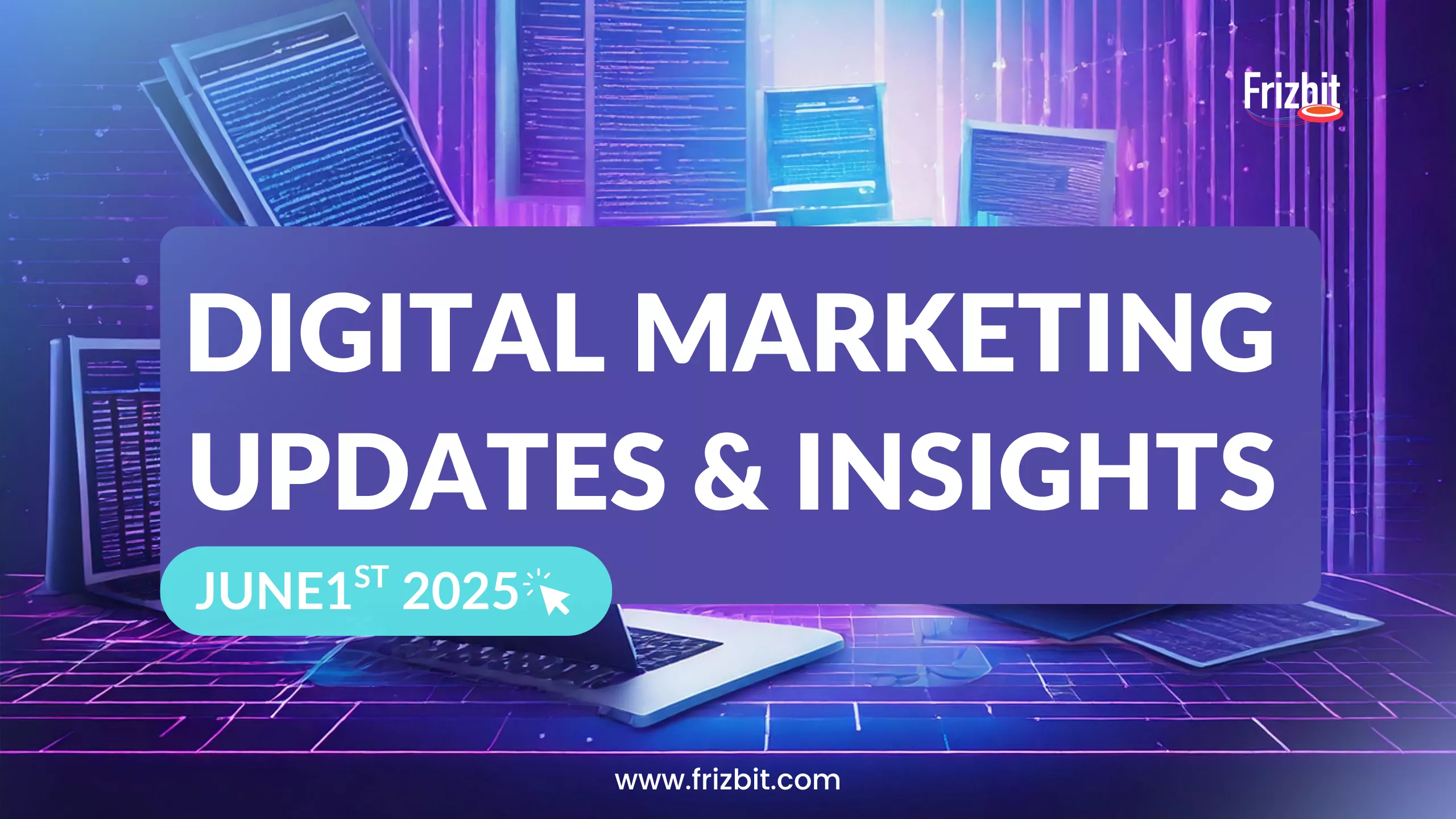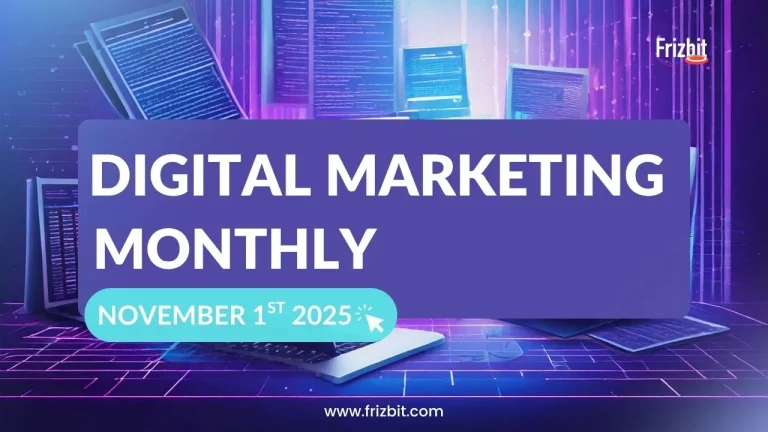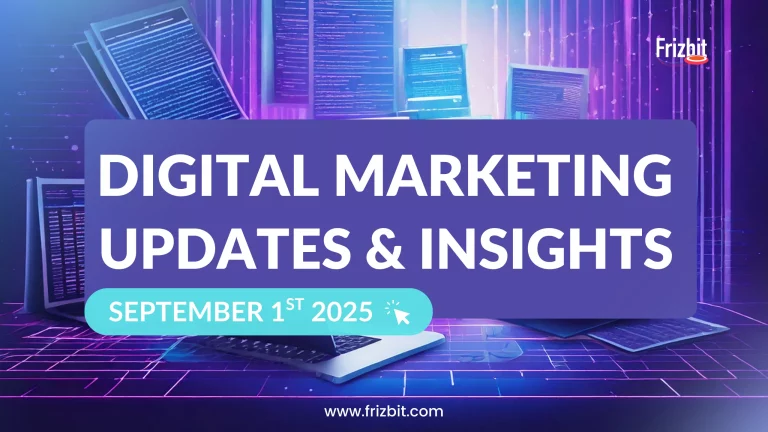Welcome to our June edition of Digital Marketing Updates! 💌
AI continues to redefine how users consume and interact with content, and this month, we’re seeing that evolution hit Search in a big way.
From YouTube Shorts appearing directly in Google results to AI-powered style discovery on Pinterest, the platforms we use every day are becoming more intuitive, visual, and context-aware.
At the same time, the rise of privacy-first search engines reminds us that not every innovation means sacrificing user trust. As marketers, we’re entering a moment where AI and privacy will need to coexist and shape the way we approach discovery, targeting and content creation.
On our side at Frizbit, we’re especially grateful to the clients who continue to trust us in redefining customer engagement marketing. We’re excited to share two new success stories from ParkVia and ForumSport, with two quite different business models. Our verdict: real results, with real impact.
Quick read – here’s what we’re unpacking this month:
- Search Marketing Updates: Google brings YouTube Shorts into Search results and privacy-first alternatives are gaining ground
- Martech: Shopify drops dozens of new features for Summer ’25 and HubSpot now connects natively with OpenAI
- Social Media: Meta enhances its AI ad capabilities and Pinterest upgrades its visual search engine
- About Frizbit: New case studies live from ParkVia and ForumSport, plus our latest Barcelona afterwork, building culture, one quarterly at a time
☕ Ready to explore the latest digital marketing updates?
Let’s get started.
Search Marketing Updates
1. YouTube Shorts now appear in Google Search: the rise of vertical video discovery
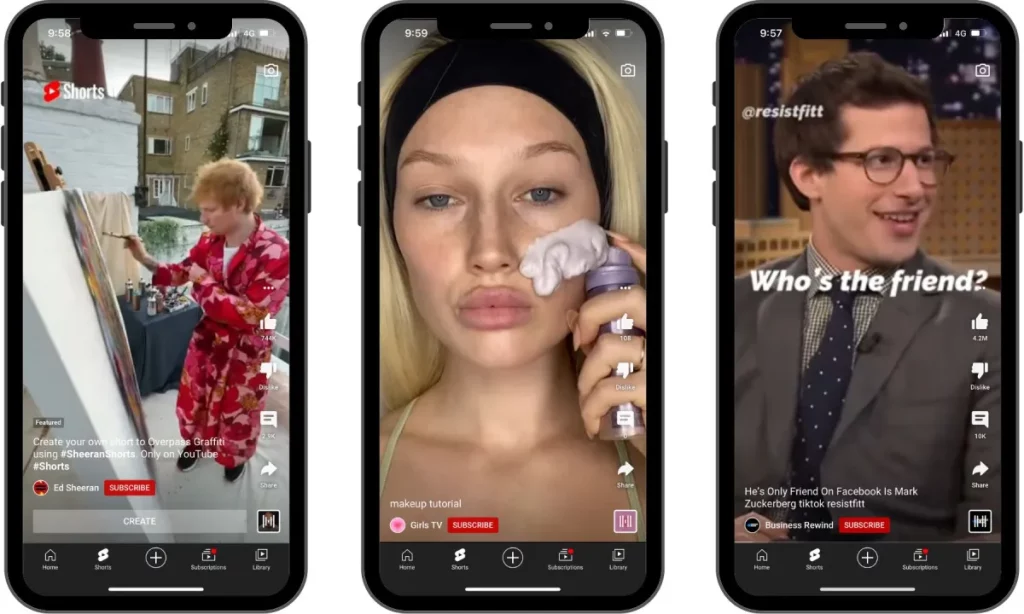
Key highlights:
- Google is now indexing and displaying YouTube Shorts directly in search results
- Users can explore Shorts by scanning real-world objects using Google Lens
- Results appear as a swipeable vertical carousel, designed for mobile interaction
- Creators are encouraged to add captions, context and clear keywords to Shorts for better discoverability
📌 Short-form video is no longer just social, it’s becoming a core part of Search.
Search meets Shorts: a shift in how people find content
Google’s move to surface YouTube Shorts in search results shows how seriously it’s taking video-first behaviour. When users scan an object with Google Lens — let’s say, a pair of sneakers or a skincare product — the results can now include vertical videos that demonstrate or review the product.
This means discovery isn’t just text- or image-based anymore. A user might now watch a 20-second video before they ever click a product page or read a blog.
For marketers, this could change how product awareness happens. Shorts become entry points, not just engagement tools. And since Google is actively surfacing this content, SEO for Shorts is very real.
🚀 What this means for marketers:
- Add searchable captions, descriptions and hashtags to your Shorts
- Optimise visual storytelling (the first few seconds matter more than ever)
- Consider vertical video as part of your product discovery strategy
- Test how your Shorts appear when scanning products or categories via Google Lens
2. Privacy-first search engines are gaining ground. What does this mean for marketers?

Key highlights:
- Platforms like DuckDuckGo, You.com, Brave Search and Kagi are gaining market share
- Users are seeking alternatives to Google that prioritise ad-free, private experiences
- These platforms use zero tracking, AI summarisation, and personalisation based on user control
- Marketers can’t rely on cookie-based targeting or traditional SEO in the same way
📌 As AI-driven search evolves, so does user concern about privacy — and it’s reshaping discovery.
Private by design: the new search experience
AI-powered doesn’t always mean invasive. Privacy-first search engines are proving that it’s possible to deliver useful, relevant results without tracking users or monetising data.
Powerful data:
- Norton reports that 85% of users globally want stricter regulations on their data.
- In the U.S., over 87% of voters back restrictions on the sale of personal data without consent, while 86% support limits on what companies can collect in the first place.
Here is where privacy-first engines come into play.
For example, Kagi uses an ad-free model and gives users control over the sources that appear in results. Meanwhile, You.com combines search with summarised answers and allows plugins, letting users shape their own interface.
These platforms are small in market share now, but they’re growing, especially among tech-savvy and privacy-conscious users. If your audience values digital minimalism or ethical tech, this trend is worth watching.
🚀 What marketers should consider:
- Focus on building organic brand presence across multiple platforms
- Avoid reliance on third-party data — instead, prioritise on-site behaviour and first-party insights
- Test your visibility in these emerging search engines to understand how you’re appearing
- Consider content formats that work without algorithmic amplification, like newsletters, podcasts, or direct traffic drivers
Our take:
Search is becoming more visual and more private, seemingly opposite trends that actually share one thing: they’re user-driven. As Google pushes into immersive discovery and privacy-first engines challenge traditional models, marketers need to balance visibility with value. It’s no longer just about ranking, it’s about being found the right way.
Martech Updates
1. Shopify Editions Summer 2025: AI, automation, and a new way to sell
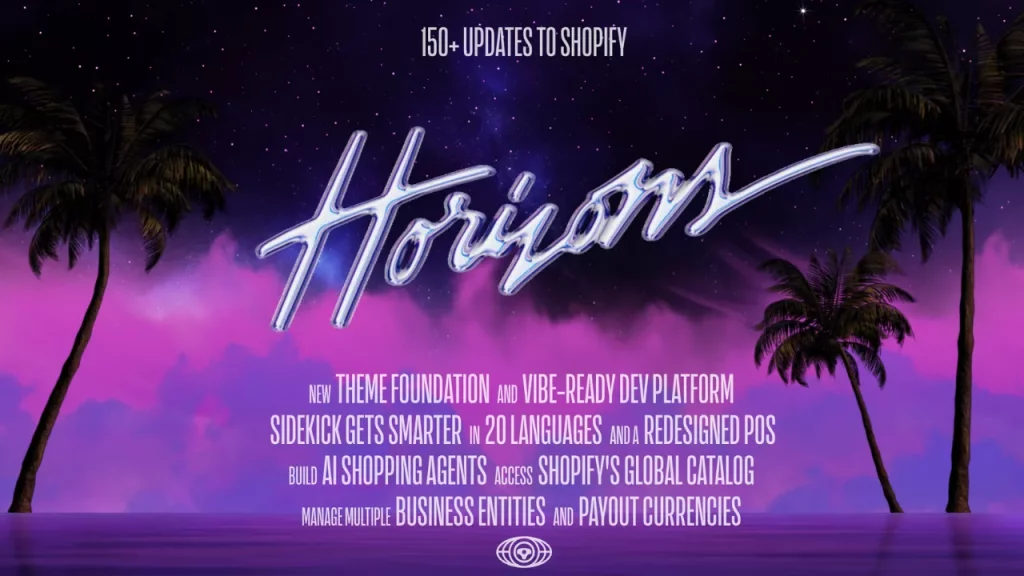
Key highlights:
- Shopify introduces Sidekick, its AI assistant for managing and optimising your store
- New Split Shipping options and custom delivery rules help businesses scale logistics
- Smart customer segments and deeper automation now available for marketing flows
- All new tools are built to help reduce manual work and boost personalisation
📌 Shopify is going from store builder to intelligent commerce platform, and AI is at the core of it.
AI becomes your co-pilot for selling
This summer’s Shopify Editions drop is all about making online selling smoother, faster, and smarter. One standout is Sidekick, a generative AI assistant that can help merchants make decisions, set up new products, and optimise store features just by asking.
For marketers, this means less time lost switching between platforms or pulling reports manually. Shopify is betting that smarter segmentation + automation = more time spent on creative strategy, not operations.
Features like “Audience Builder” and AI-driven product descriptions also signal where things are going: your store isn’t static, it’s intelligent, and it’s learning from every click.
🚀 What marketers can do with this:
- Use AI-generated descriptions to speed up catalogue expansion
- Tap into audience insights to create segments based on behaviour, not just demographics
- Experiment with automated A/B testing for promos and landing pages
- Let Sidekick help identify conversion drop-offs and missed opportunities
2. HubSpot integrates OpenAI natively: automation and personalisation just got easier
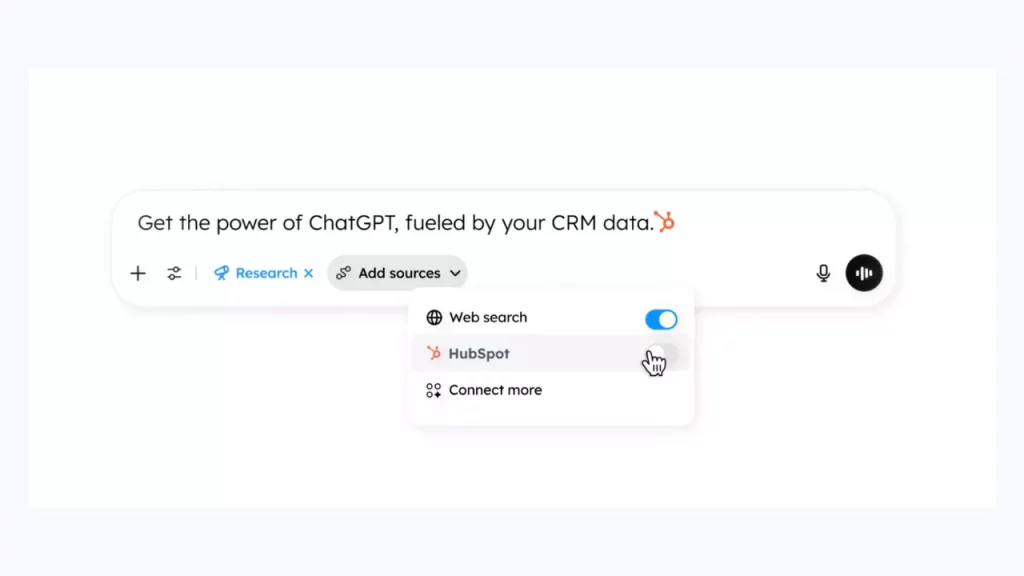
Key highlights:
- HubSpot now offers a native OpenAI connector
- Users can build workflows that generate, rewrite or summarise content automatically
- Custom actions can be triggered via OpenAI prompts (no dev needed)
- Integrates directly into chatflows, emails, and CMS
📌 If you’re using HubSpot and AI separately, this update finally brings them together in one flow.
The AI-powered CRM is no longer theoretical, it’s here.
With this native connector, marketers can now add AI-powered steps directly into their workflows — no copy-pasting, no switching tools. Want an email to rewrite itself for a new audience? Done. Want a follow-up message to be summarised based on previous interactions? Easy.
The key advantage here is context-aware personalisation at scale, without bloating your martech stack.
And since it’s all inside HubSpot, marketers can build full-funnel journeys that feel intelligent, not automated.
🚀 How to use this now:
- Automate email generation and rewriting based on deal stage or persona
- Summarise customer notes or interactions for internal handovers
- Use AI to power live chat suggestions or knowledge base content
- Create databases with smart segmentation
Social Media Updates
1. Meta expands AI-powered ads with new goal settings

Key highlights:
- Meta adds goal-setting inputs to its AI-powered Advantage+ campaigns
- Advertisers can now prioritise video views, clicks, or conversions
- This makes AI ad delivery more aligned with actual campaign KPIs
- Performance benchmarks will soon be available for clearer insights
📌 AI campaigns don’t mean giving up control. Meta is adding back the steering wheel.
From autopilot to guided targeting
Meta’s Advantage+ campaigns have been a big step in automating ad delivery, but until now, they worked like a black box. With this update, advertisers can finally tell Meta’s AI what “success” looks like.
That means more efficient spend, clearer alignment between creative and outcomes, and better attribution for video, traffic, or direct response campaigns.
It’s still AI-led, but now with business-driven inputs.
🚀 How to take advantage of this:
- Specify your primary goal clearly when setting up Advantage+
- Match your creative format to the selected outcome (e.g. short-form video for video views)
- Use Meta’s benchmark tools to assess performance realistically
- Keep testing. Meta’s AI still needs data to optimise effectively
2. Pinterest upgrades its AI Visual Search with Style Match 2.0
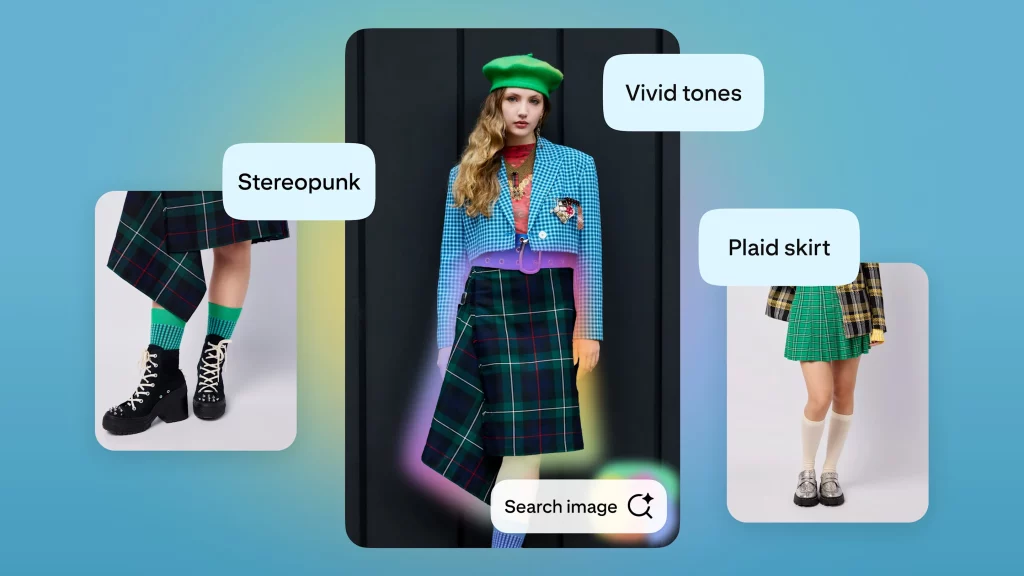
Key highlights:
- Pinterest now offers real-time product matching via Style Match
- Users can tap any object in a Pin to find similar items across retailers
- Powered by an updated AI visual engine with better accuracy
- Style Match is now faster and more integrated across mobile and desktop
📌 Discovery on Pinterest is shifting from keywords to images, your product visuals now matter more than ever.
Search with your eyes, not your words
Pinterest’s visual search was already ahead of the curve, but the new Style Match 2.0 makes product discovery nearly frictionless. If a user sees a dress, lamp, or backpack they like, they can instantly find lookalikes without knowing the brand, style name, or even the category.
This is especially powerful for lifestyle and retail brands, where aesthetics drive intent more than specs.
🚀 What to do next:
- Optimise product visuals for clarity, context, and recognisable style cues
- Upload clean, varied images of each product (e.g. lifestyle + white background)
- Monitor how your products surface on Pinterest via visual search
- Explore ad formats that tie into discovery behaviours (e.g. collection ads, carousel Pins)
Our take:
The future of discovery is multimodal and Pinterest is showing how visual-first navigation can drive purchase journeys. Meanwhile, Meta is handing marketers more levers in the age of automation. Whether you’re focused on control or creativity, June’s social media updates show that AI is evolving from mysterious to manageable and that’s a win for performance marketers.
About Frizbit
1. New Case Study – Seasonal Business Model: how ParkVia scaled results with hyper-personalised web push notifications
Key metrics:
- 10x ROI
- 30% higher conversion rate from returning users
- £0.09 cost per session
📌 As a seasonal business, ParkVia needs to maximise intent during short booking windows, especially around peak travel periods.
With Frizbit’s web push automation, they re-engaged visitors right when it mattered most. Multilingual flows, tailored triggers and real-time segmentation helped ParkVia turn passive visitors into repeat bookings without relying on paid media.
2. New Case Study – Offer-Driven Business Model: how Forum Sport automated time-sensitive campaigns at scale
Key metrics:
- 11x ROI through marketing automation retargeting
- +25% uplift in campaign CTR
📌 Forum Sport runs frequent, time-sensitive promotions, which meant their automation needed to move at the speed of retail.
With Frizbit, they launched multilingual web push flows that automatically adjusted to new product offers and stock changes. The result? Higher re-engagement rates, better offer visibility, and increased revenue from repeat traffic, all without extra manual work.
3. Behind the Scenes: Barcelona team wraps Q2 with our After Work meetup 🍻

During May, our Barcelona team got together for our quarterly After Work session, celebrating wins, lessons, and the people behind the tech.
Whether it’s shipping new features, supporting client success, or optimising real-time customer journeys it’s always the team making it happen.
These moments help us recharge, reflect, and keep growing together. Here’s to a quarter full of collaboration and to what’s coming next 💬
Don’t miss Frizbit’s monthly blogs and explore our latest Digital Marketing Updates and News!
